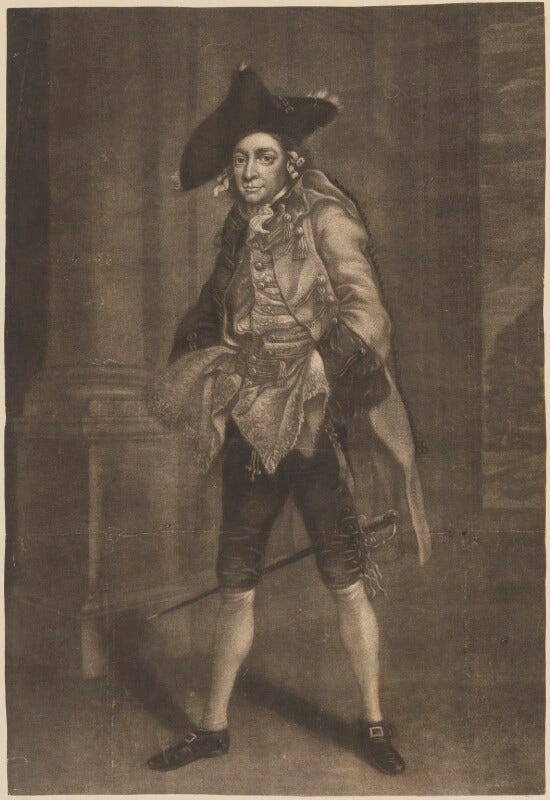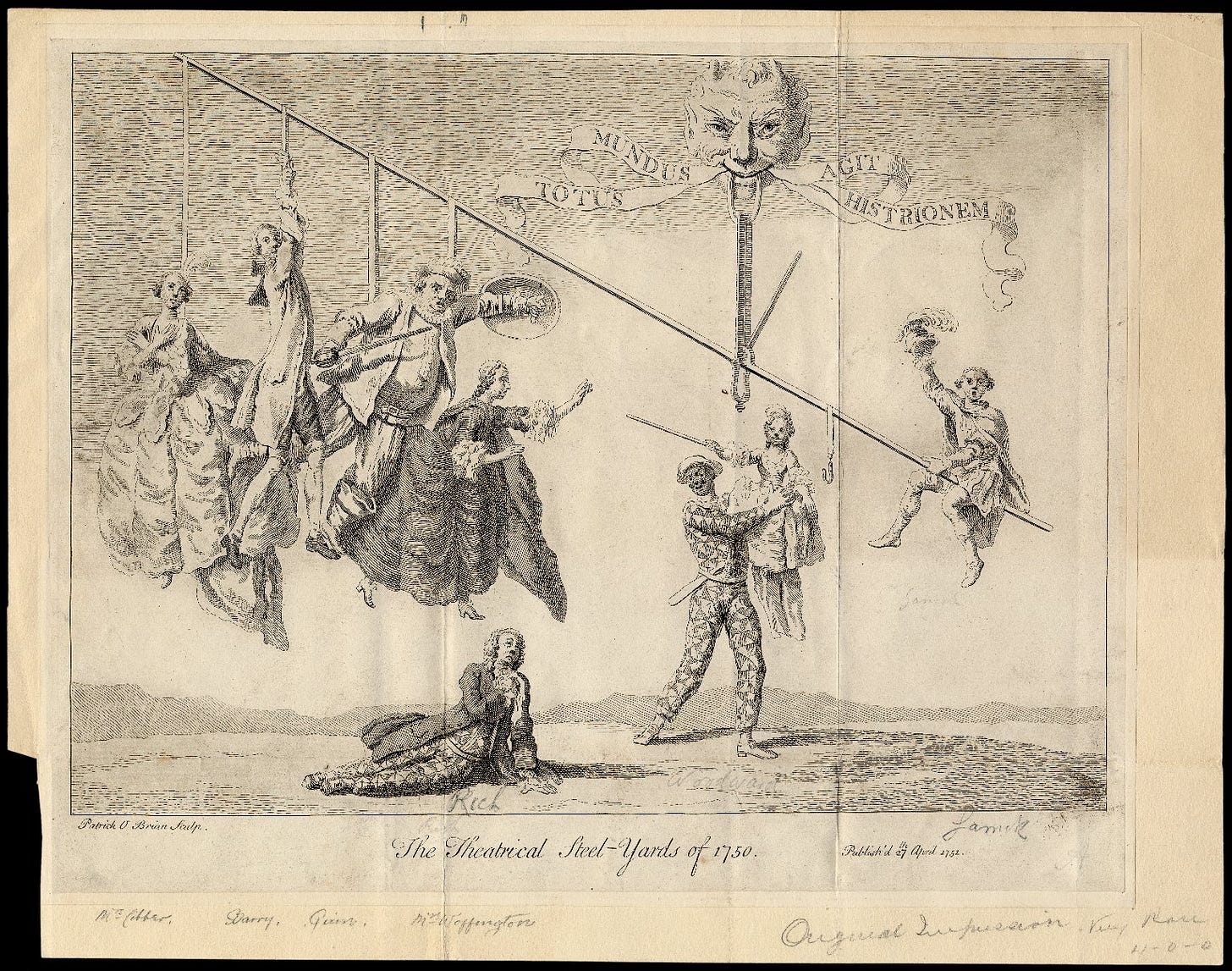Pantomime has a long and complex history but was well underway as a form of popular entertainment in Britain by the middle of the 18th century. With its roots in commedia dell’arte, it had become a mainstay of Lincoln Inn’s Fields playhouse under the well-known Harlequin and theatrical manager, John Rich. Rich (pictured below) continued the tradition at Covent Garden: the theatre he built from the profits of The Beggar’s Opera following its runaway success in 1728.
However, it was actor-manager David Garrick (above) who established the cultural link between pantomime and Christmas. The opening of the 1750-51 theatrical season in London heralded an increased competition between Drury Lane (of which Garrick was a co-manager) and Covent Garden playhouses. Pantomimes were often expensive to mount, since audiences expected a certain amount of visual spectacle, but they were popular entertainment, far removed from Shakespeare and classical tragedy – both artistically serious but not always lucrative. Although he disliked pantomime, Garrick was fundamentally pragmatic (“If you won’t come for Lear or Hamlet, then I must give you Harlequin” he supposedly remarked).
On Boxing Day, 1750, Garrick opened the attack on Rich by staging a new pantomime after Drury Lane’s production of The Beggar’s Opera. It was called Queen Mab: a reference to a fairy in Shakespeare’s Romeo and Juliet, and therefore appropriate for Drury Lane, which Garrick had successfully positioned as the home of Shakespeare. The material was written by the popular comedian, Henry Woodward, whom Rich had trained years before at Lincoln’s Inn Fields playhouse. Woodward (pictured below) played Harlequin, putting himself in direct competition with his former mentor, who happened to be one of the most famous Harlequins of the British stage.


Drury Lane’s Queen Mab was a roaring success. Soon afterwards, a satirical engraving called The Theatrical Steel-Yards of 1750 (below) emerged in the windows of print shops around London. It showed Garrick sitting astride a ‘Steelyard’: an apparatus for weighing which consists of a straight-beam balance with arms of unequal length and a counterweight which slides along the arm. From the left-hand side of the beam were suspended the principal actors of Covent Garden. Peg Woffington is depicted with a plume in her hair, and with her arms crossed on her breast, while Spranger Barry, James Quin and Susannah Cibber are dangling in characteristic roles and poses (Quin holds a sword and shield in the character of Falstaff).
However, they are effortlessly outweighed by one small figure on the right, Garrick, who sits astride the balance cheerfully saluting the viewer with his helmet. Rich, as ‘Lun’, lies on the ground with his eyes sadly aloft, while his rival, Woodward, holds up a puppet of Queen Mab. The little puppet points at the defeated players with her wand. As was customary in theatrical satire, a ribbon above the scene advertises the Shakespearian motto: ‘Totus mundus agit histrionem’ (‘All the world’s a stage’).
The message was clear: thanks to Woodward’s Shakespearean whimsy, Garrick had utterly trounced his rivals at Covent Garden and, in the process, invented a new festive tradition.







How timely this post has proved for me. We went to the Lichfield Garrick on 27th December to thoroughly enjoy this season's entertaining production of Jack and the Beanstalk.
On 24th December the following article appeared https://www.thetablet.co.uk/arts/what-the-dickens/ which I turned up in thinking about how A Christmas Carol has become a core staple for present day readers, listeners, viewers and theatre go-ers. Would it, has it already been, worked as a pantomime I was wondering... and found Mark Lawson's piece grist to the thinking mill. You may, perhaps, find some interest in his passing comments on the - supposed - decline of the tradition of Christmas panto, that I now more fully appreciate thanks to your post, stems from David Garrick's beau stratagem for turning the box office booking tills.